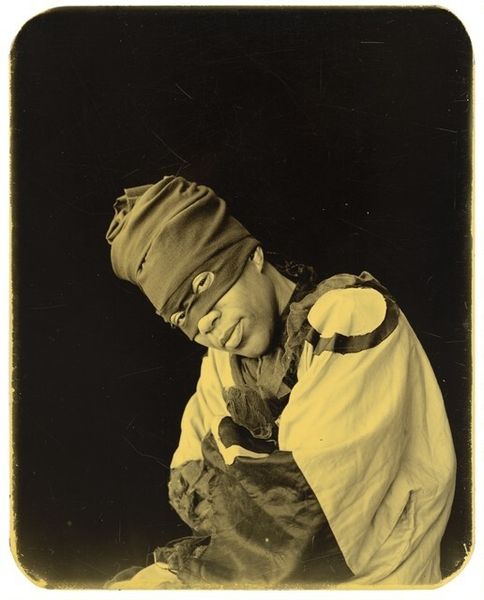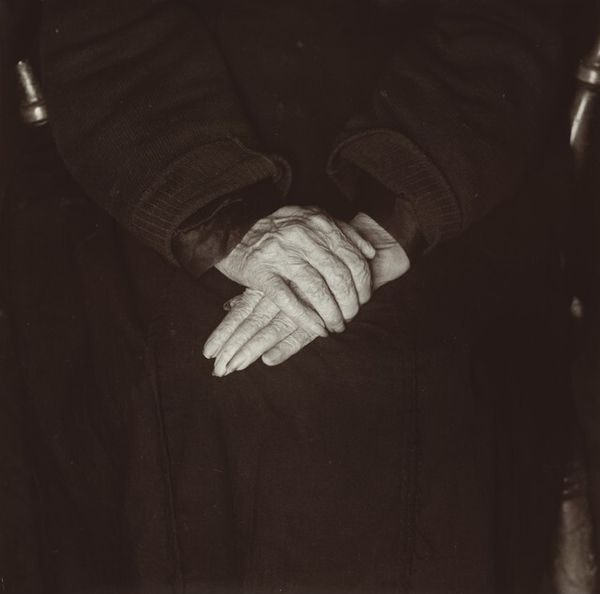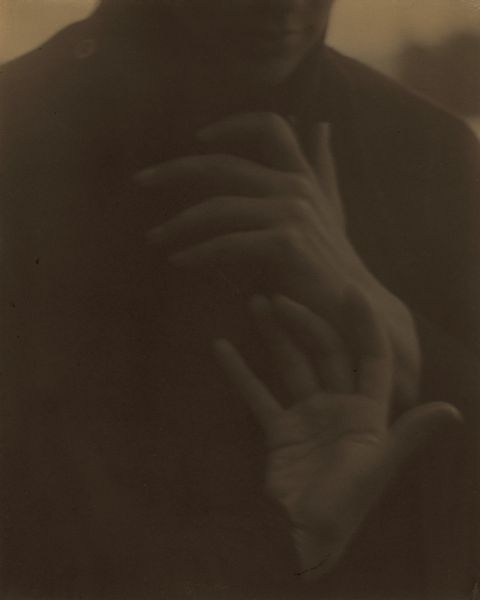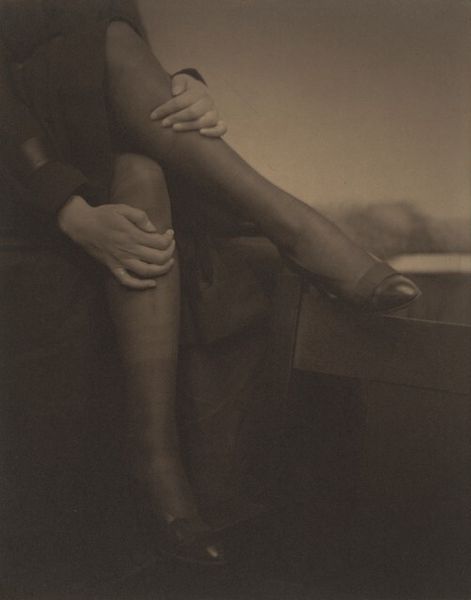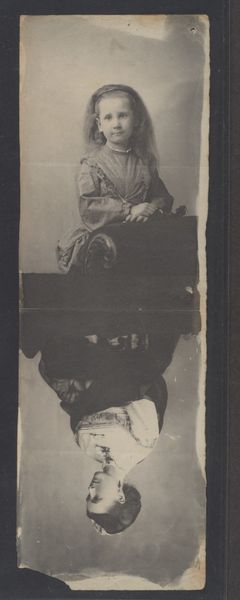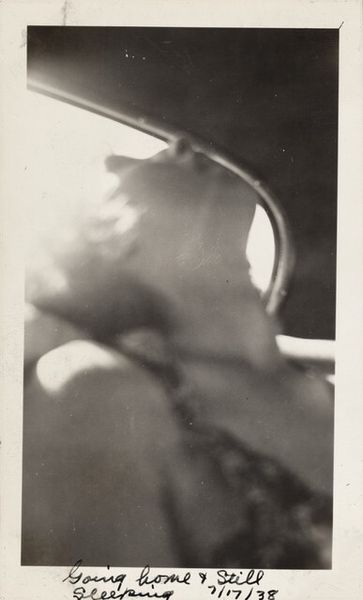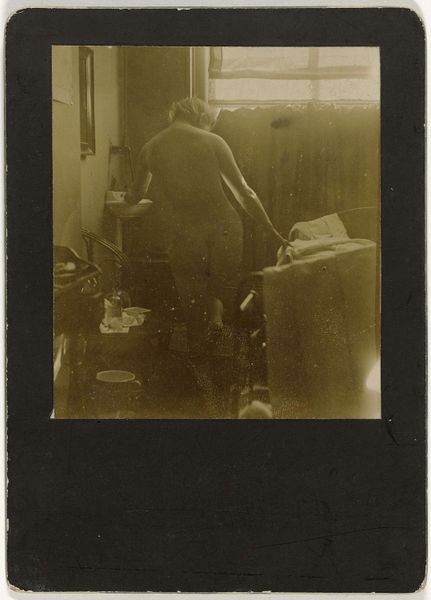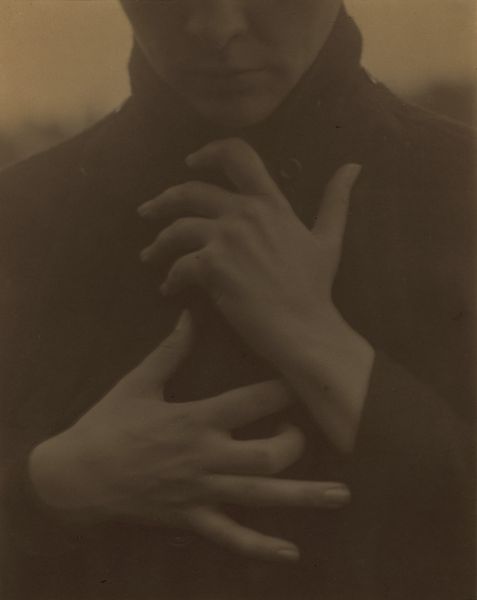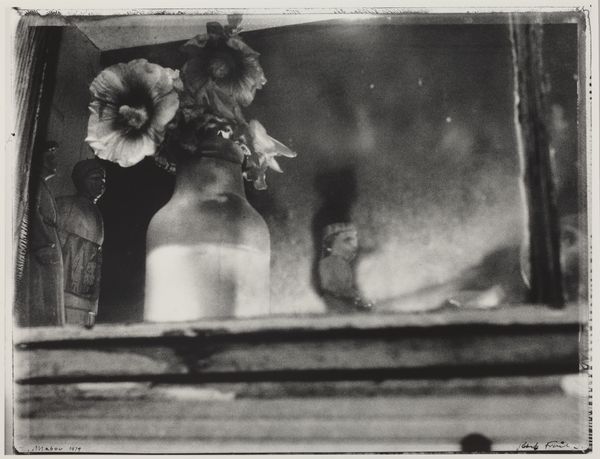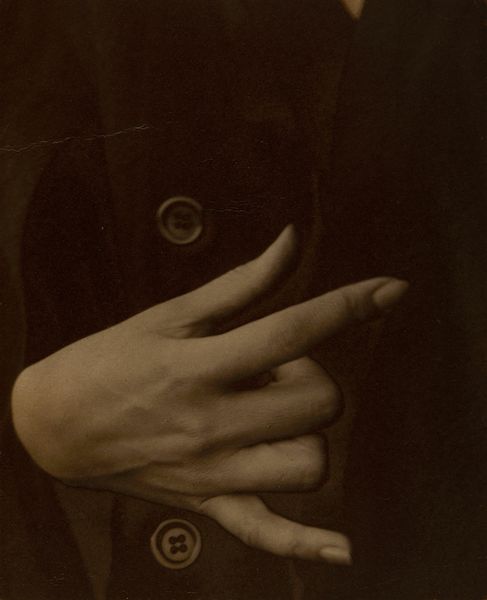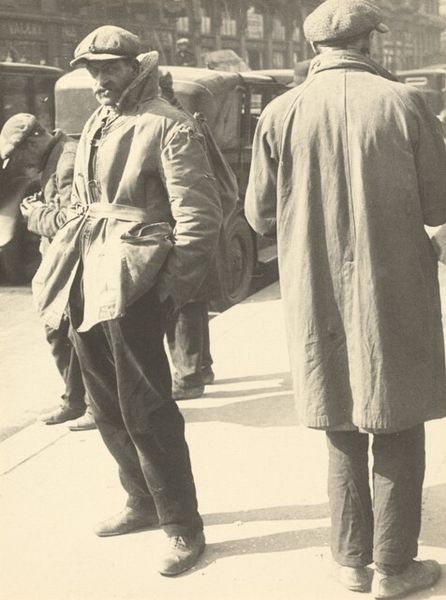
photography, gelatin-silver-print
#
portrait
#
street-photography
#
photography
#
gelatin-silver-print
#
realism
Dimensions: image/sheet: 11.8 × 9.1 cm (4 5/8 × 3 9/16 in.)
Copyright: National Gallery of Art: CC0 1.0
Curator: Dorothea Lange's 1934 photograph, "San Francisco Waterfront," offers a stark look at a specific moment in the city’s history, captured in gelatin silver print. Editor: The monochrome tones immediately set a somber mood, and the cropped composition pulls you right into the center of unspoken emotion. There is a heavy emphasis on tactile materiality through garments, but it isn't immediately clear what narrative it portrays. Curator: Well, consider the socio-economic climate. It's the Great Depression. Lange was documenting the impact of economic hardship on individuals and communities. Note the wear on the visible coat; these are likely workers awaiting jobs. The tightly knit figures speak to a shared experience of desperation. Editor: Yes, the visual language suggests anxiety—gestural hands hovering above stooped figures. Yet, the composition almost abstracts them. Notice how the receding buttons on the figure to the right form a vertical march into depth, balanced by the downward gaze of the figures at center. Curator: Precisely! Lange doesn’t just capture the reality; she uses photographic techniques to amplify its emotional resonance. We have to remember this was commissioned work for the state. She used her skills as a portrait photographer to reveal the economic structure and systems that forced the need. The focus isn’t solely on poverty itself, but how policy created these outcomes. Editor: Indeed. The cropping isolates these workers but obscures individual identity. It begs an interpretation not as portraits, but rather components in a greater visual whole which only, collectively, may convey some symbolic essence. Curator: Exactly! The labor of crafting a narrative about laborers. We see the impact through the finished photograph, displayed, discussed. Who is able to view the work and the socioeconomic privilege implied by being in the gallery as the audience member? Editor: Seeing how we began dissecting a single moment, captured forever in shades of gray, opens to me how art can transform mundane scenes into an arena for dialogue, revealing our complicated realities. Curator: For me, reflecting on the historical context interwoven with this photoprint reinforces an artist's profound social responsibility to make a political statement, making images and creating enduring, material evidence of inequality.
Comments
No comments
Be the first to comment and join the conversation on the ultimate creative platform.
